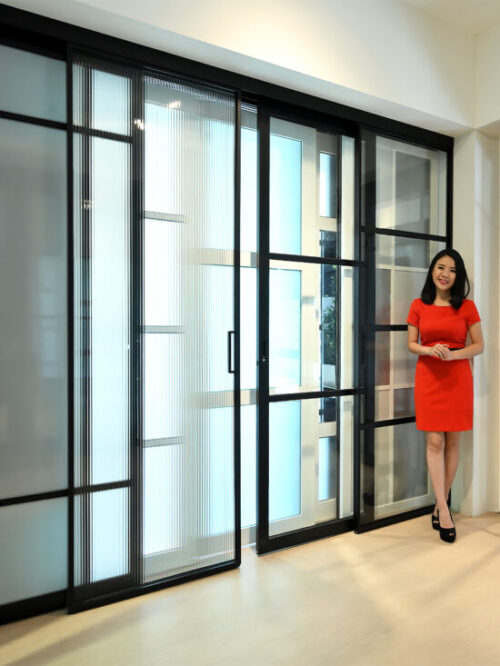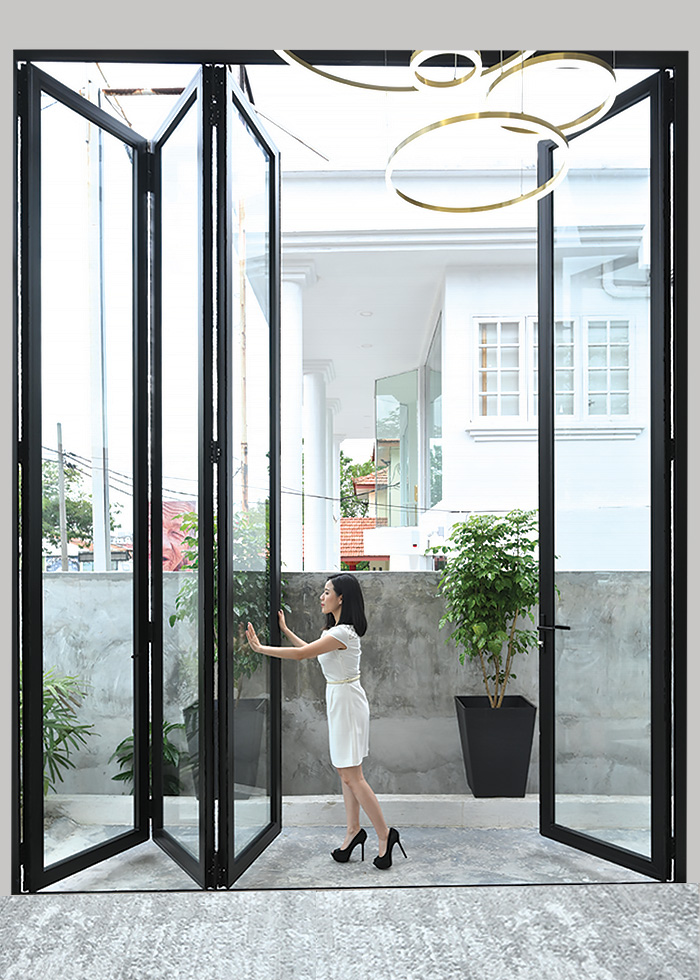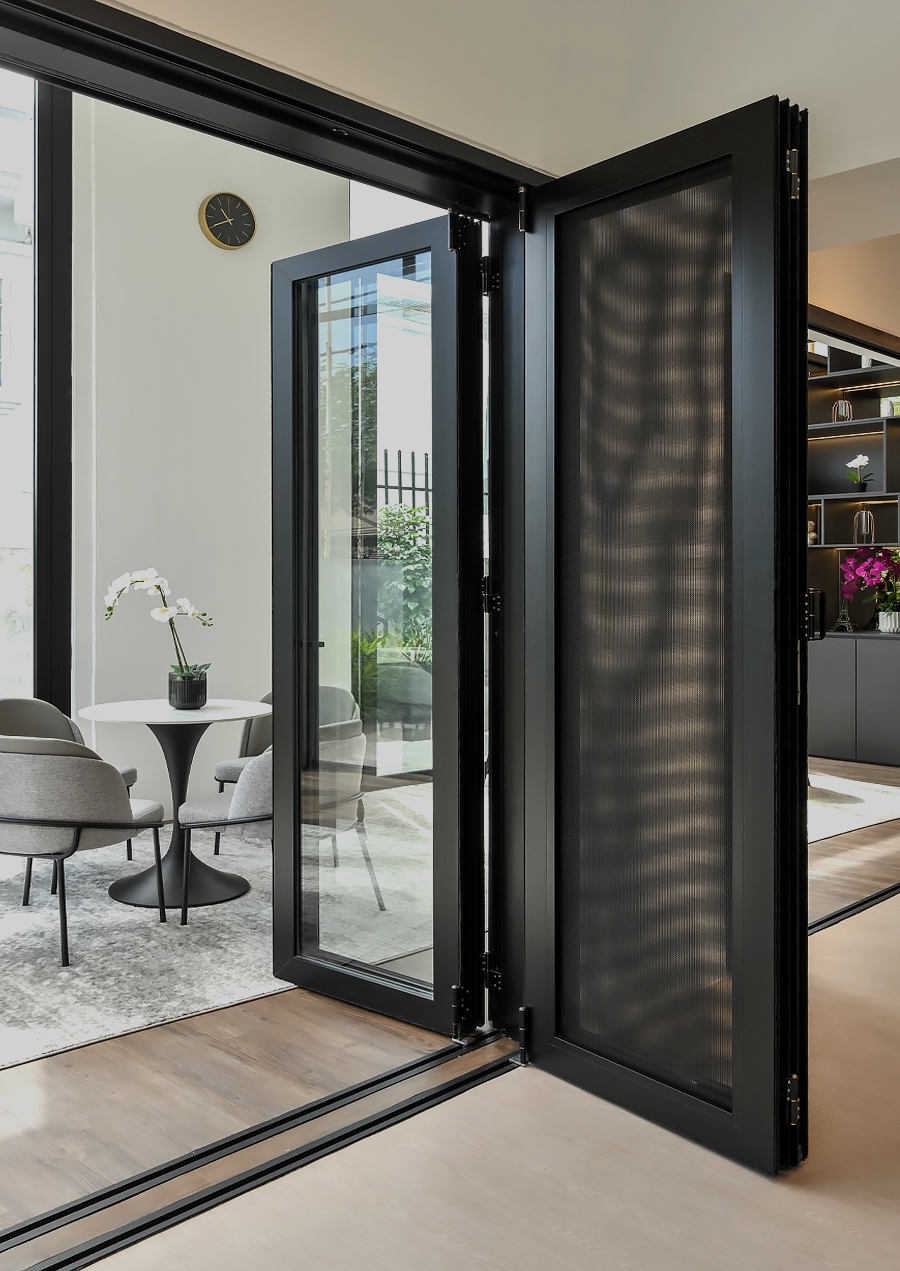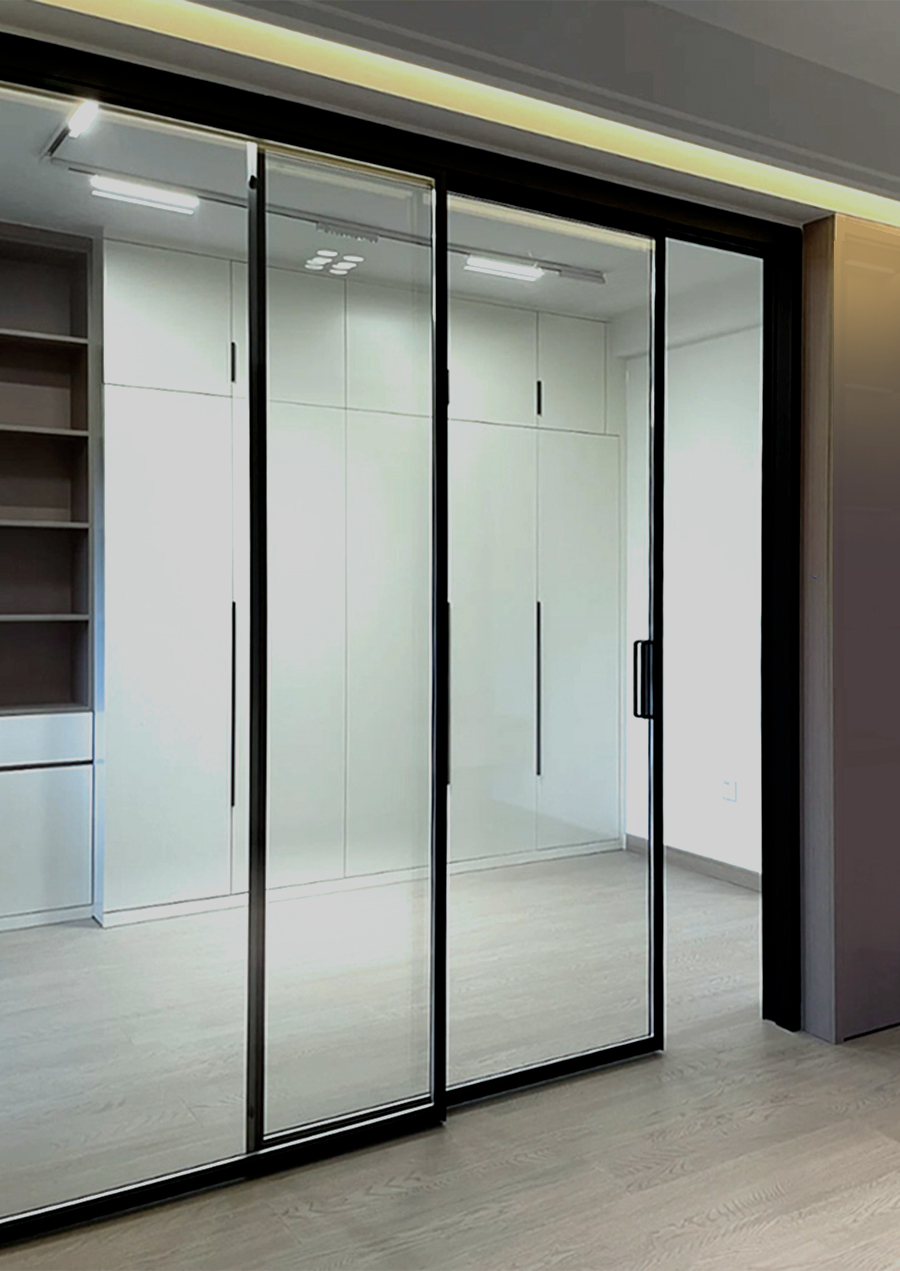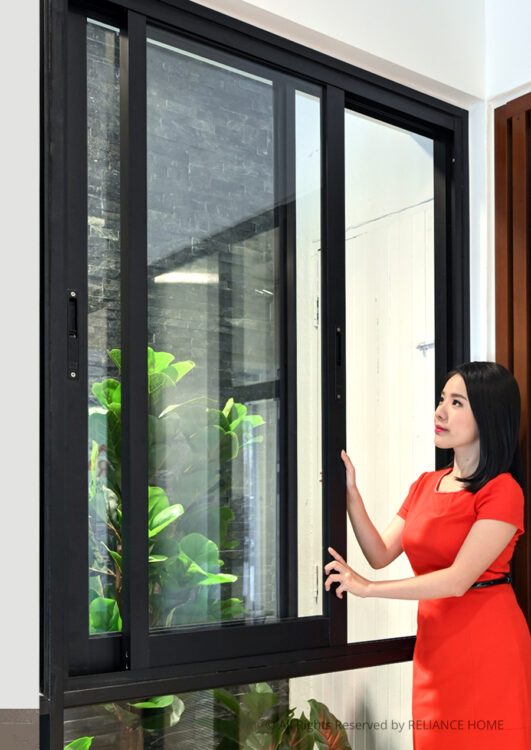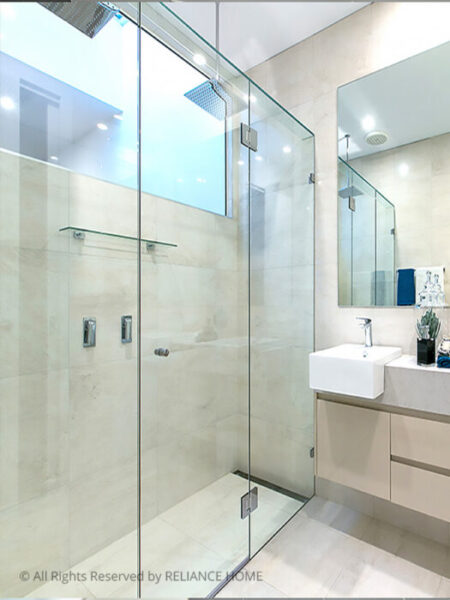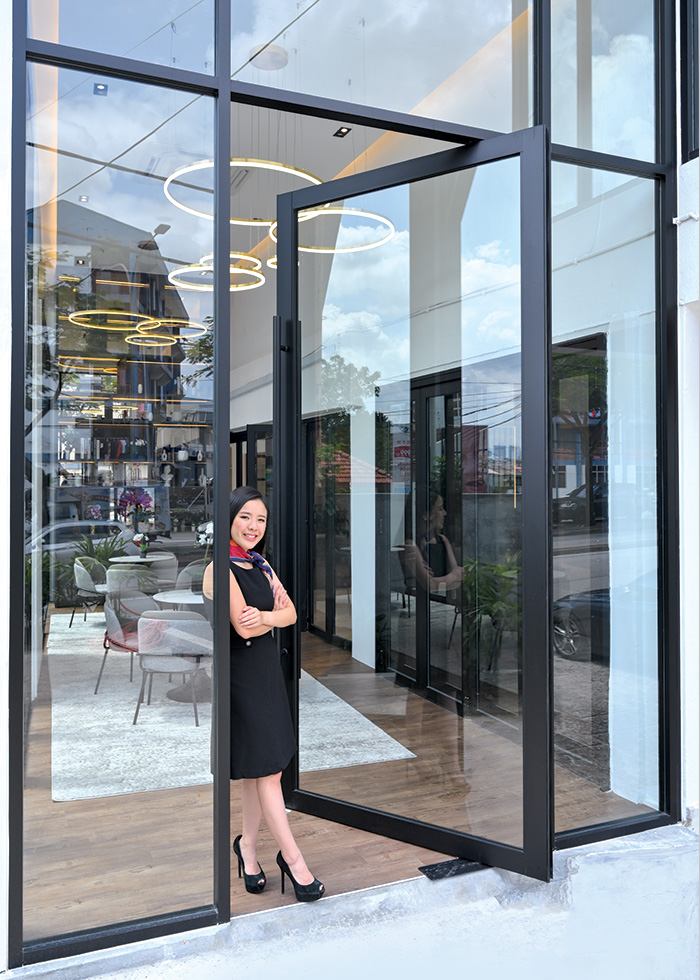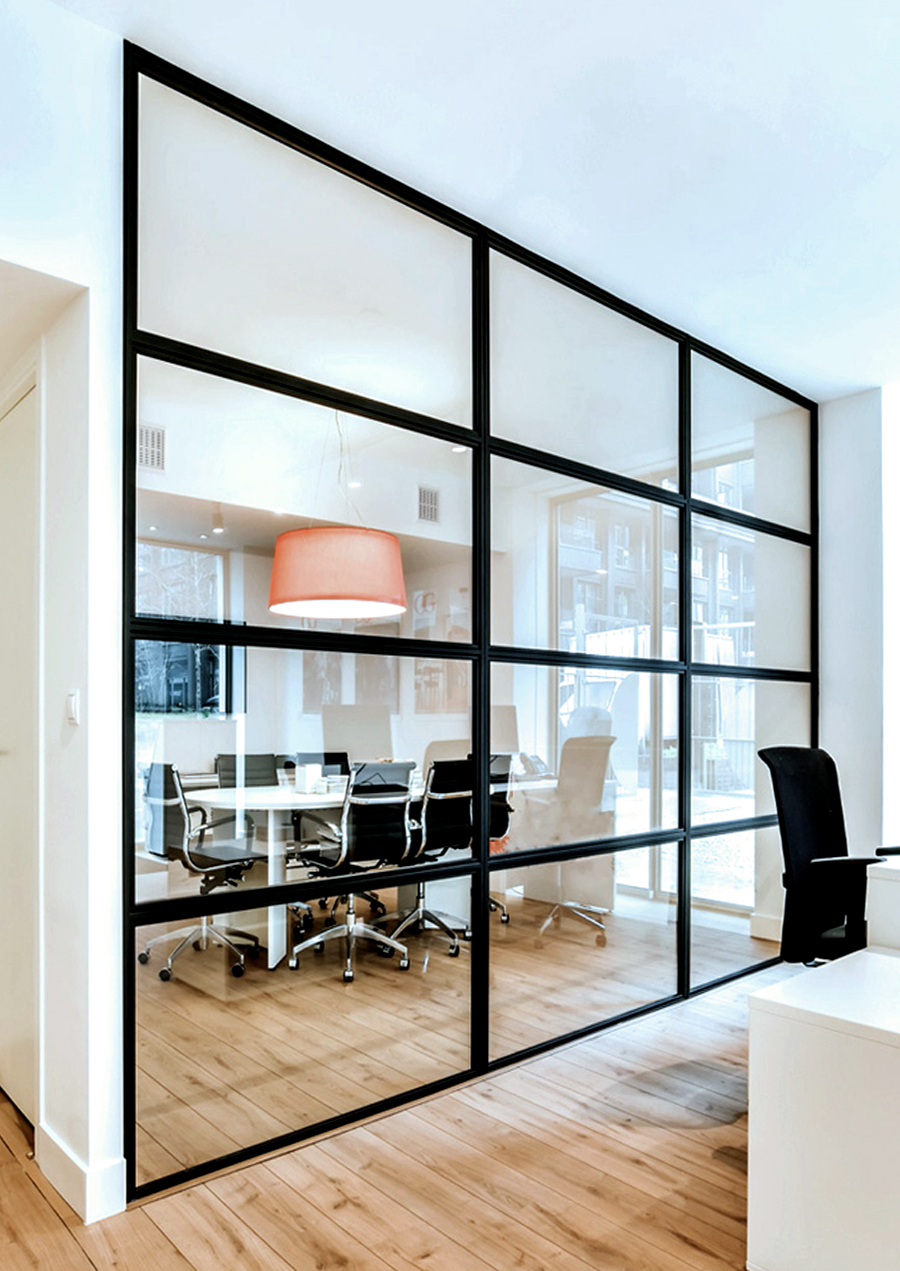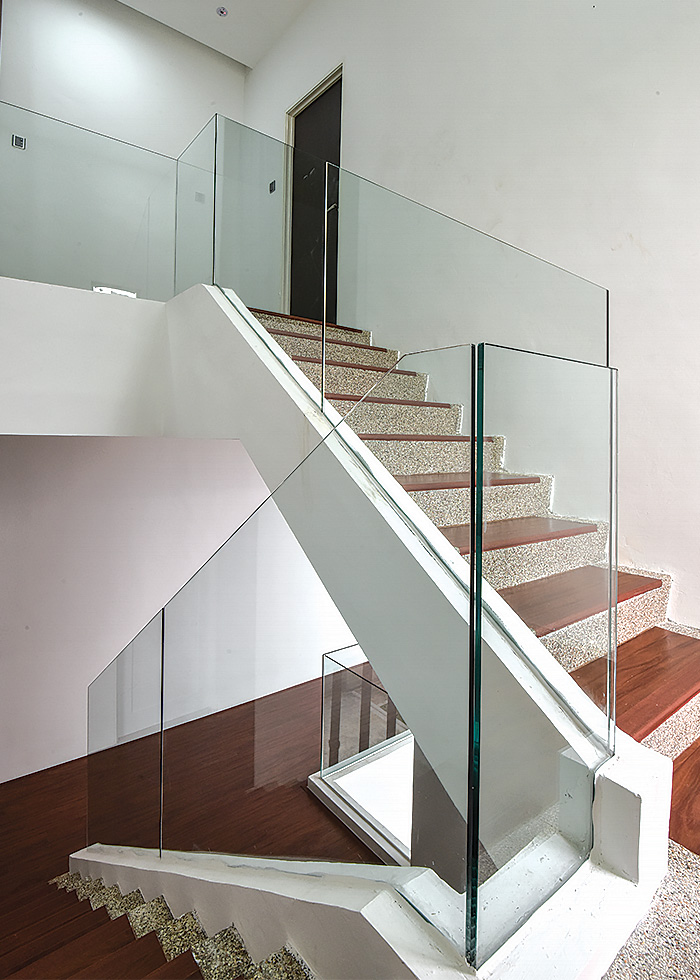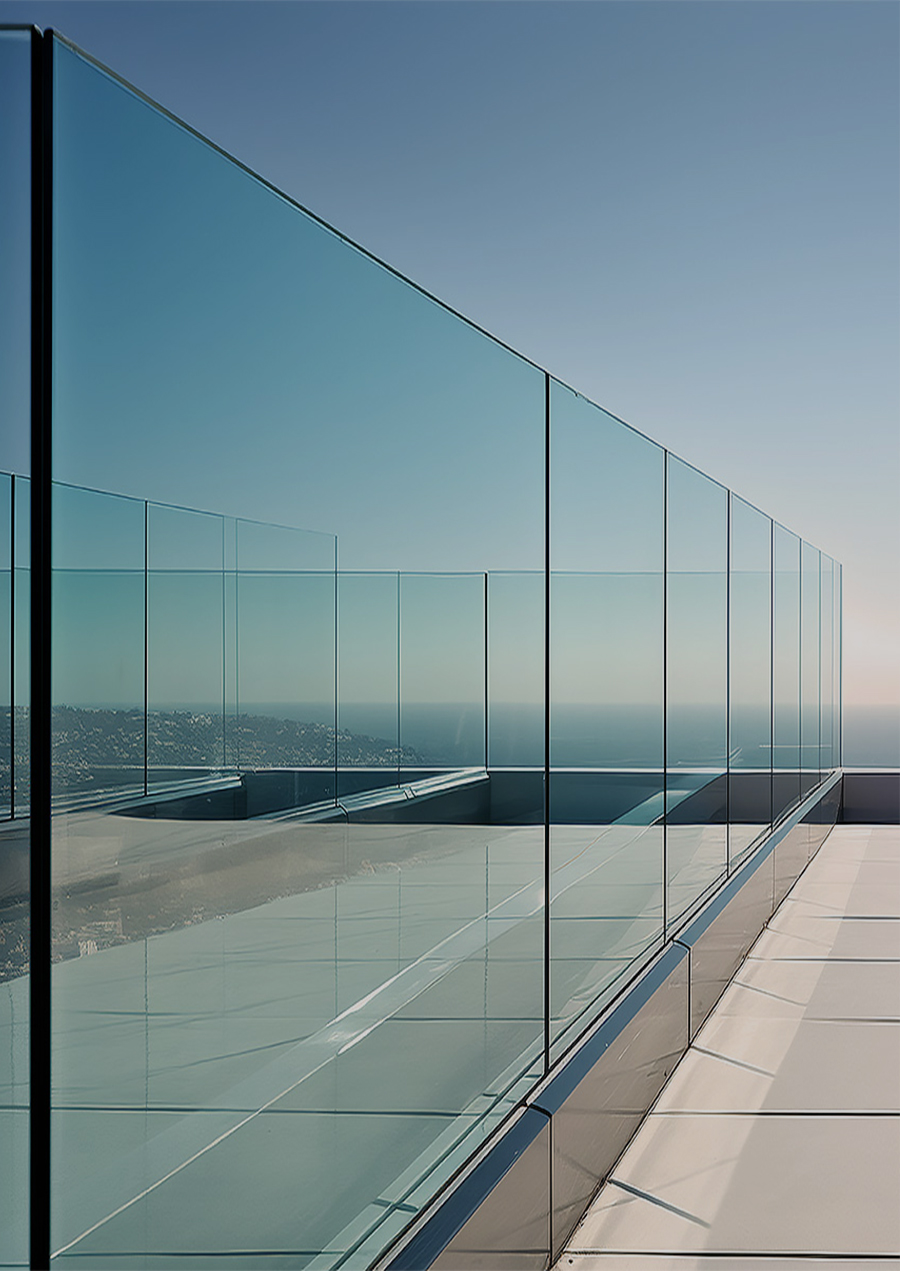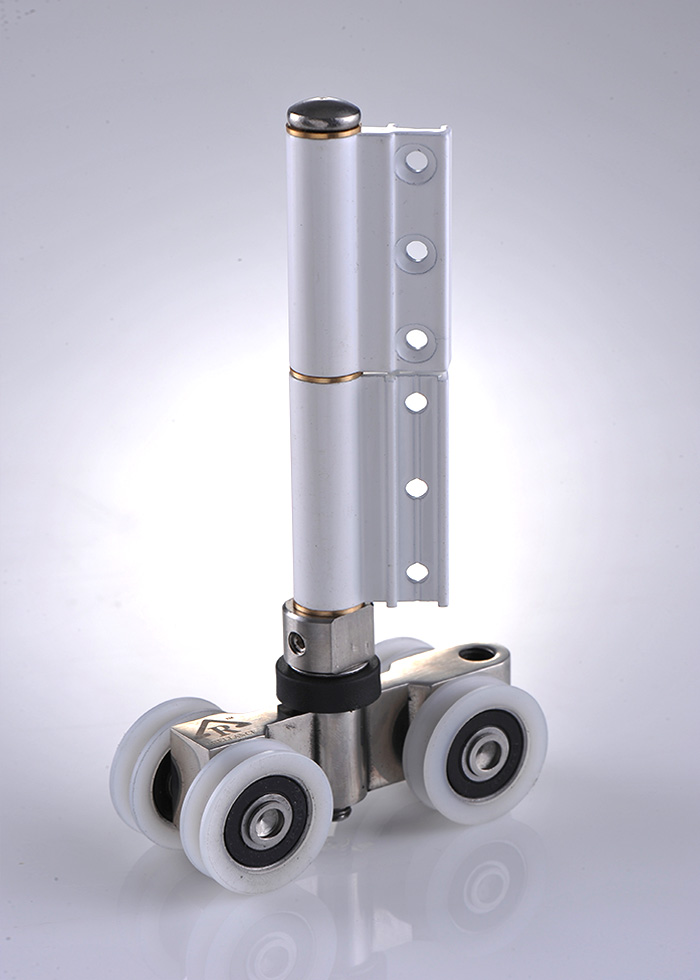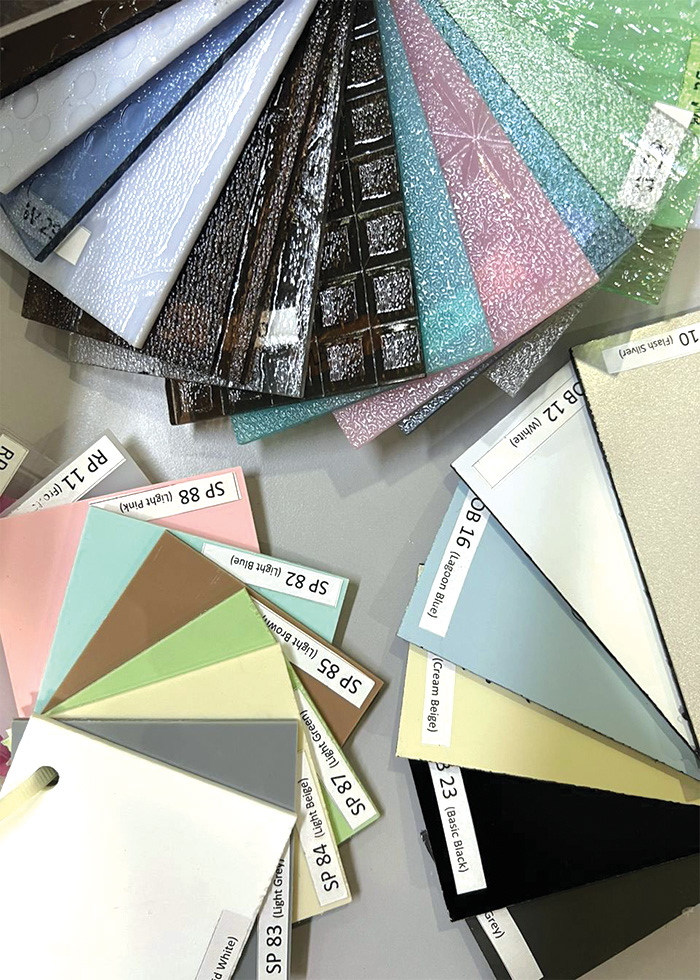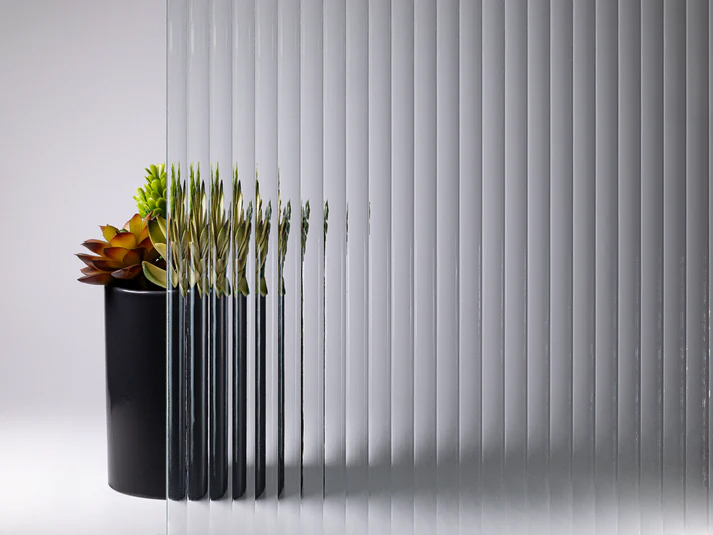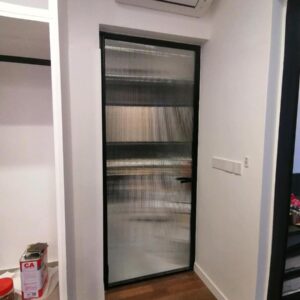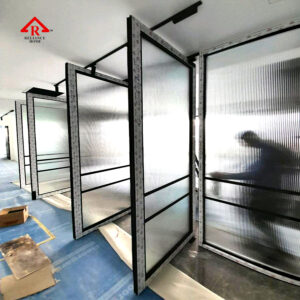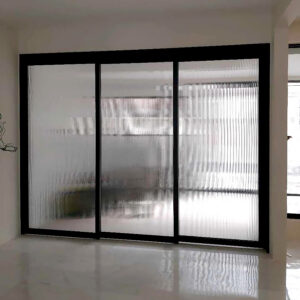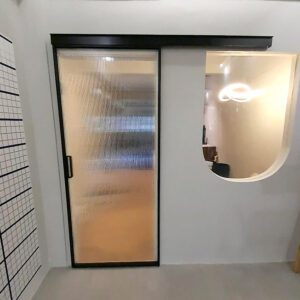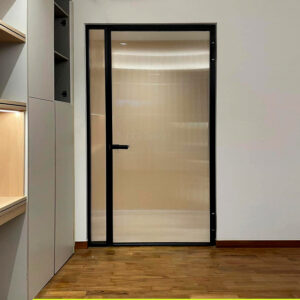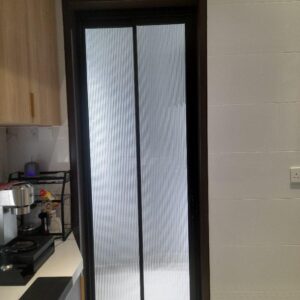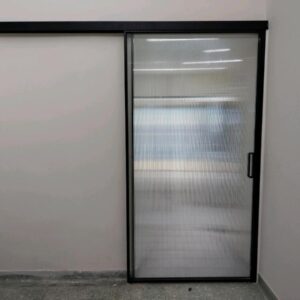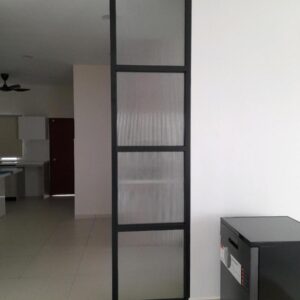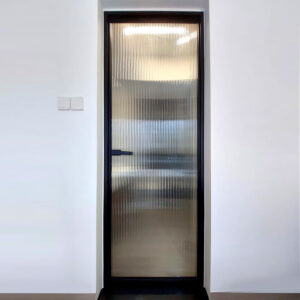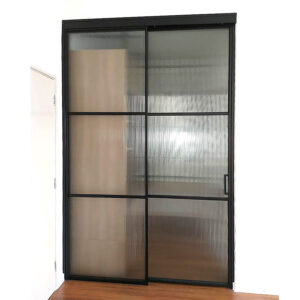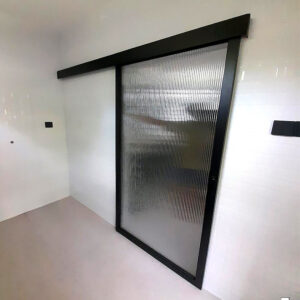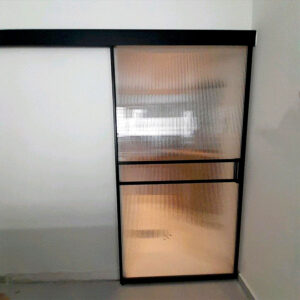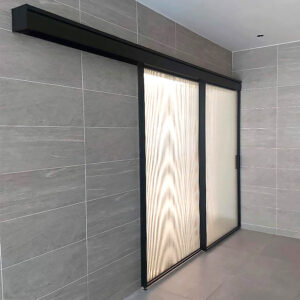Reeded Glass
Reeded glass is a type of patterned glass that features a series of vertical, raised ridges or “lines” that run across the surface of the glass. These ridges can vary in size and shape, but the most common characteristic is the repeating, textured pattern. Reeded glass is used for a variety of purposes due to its aesthetic appeal and practical qualities. Here are some key facts about reeded glass:
1. Pattern and Texture
- The ridges on reeded glass can create a distinct visual effect, offering an elegant and stylish appearance.
- The texture of reeded glass can provide a level of privacy by distorting the view through the glass, making it an ideal choice for windows, doors, or partitions in areas where privacy is a concern.
2. Applications
- Privacy Glass: It’s commonly used in spaces where privacy is needed but where natural light should still be allowed to pass through. For example, bathroom windows, shower doors, and office partitions.
- Decorative Element: Reeded glass is often used for its decorative appeal in furniture, light fixtures, cabinet doors, or glass partitions.
- Lighting: The texture of reeded glass can diffuse light beautifully, which makes it a popular choice in lamps and pendant lights.
3. Materials
- Reeded glass is typically made from clear glass, though it can also be tinted or frosted to enhance the aesthetic or privacy function.
- It can be either tempered glass for safety applications or regular glass, depending on the use.
4. Durability and Maintenance
- It is relatively durable, especially if it is tempered. However, the texture can sometimes trap dirt or dust in the ridges, requiring more frequent cleaning than regular smooth glass.
- Cleaning reeded glass is best done using a soft cloth or sponge and a mild cleaning solution to avoid damaging the texture.
5. Design Versatility
- The ridged texture of reeded glass pairs well with various interior styles, including modern, industrial, and vintage designs.
- It is available in different levels of ridged depth or fineness, so it can create subtle effects or bolder, more pronounced designs depending on preference.
6. Benefits
- Privacy: As mentioned earlier, the texture of the ridges can obscure the view, offering a level of privacy while still allowing light to come through.
- Light Diffusion: The texture also softens and diffuses light, creating a pleasant and diffused glow in a room.
- Aesthetic Appeal: Its unique design offers an elegant touch to a variety of spaces, making it popular in both residential and commercial design.
7. Variations
- Single-Sided Reeded Glass: The texture is only on one side of the glass, which might be used in decorative panels or partitions.
- Double-Sided Reeded Glass: The texture is on both sides, providing a more consistent look and feel.
Reeded glass is a great choice if you’re looking to blend style with function, especially for applications where you want to maintain a balance between light and privacy.
REEDED GLASS: DESIGNING FOR AESTHETIC AND PRIVACY
Reeded glass is a stylish and practical option for those looking to combine design with function, especially in spaces where privacy and light diffusion are key concerns. Here’s how reeded glass excels when it comes to both safety and aesthetics:
Reeded Glass: A Design for Privacy and Light Control
1. Privacy with Elegance
Reeded glass, with its vertical ridges, distorts the view through the glass while still allowing natural light to pass through. This makes it a popular choice for bathroom windows, office partitions, and even shower doors, where privacy is essential without sacrificing daylight.
2. Light Diffusion
The texture of the glass softens and diffuses light, creating a pleasant, diffused glow that enhances the ambiance of any room. This characteristic makes it ideal for decorative lighting applications, such as lamps, pendant lights, and light panels.
3. Aesthetic Appeal
The subtle, elegant ridges of reeded glass lend it a timeless quality that suits a wide range of interior designs, from modern to vintage. It’s used in a variety of spaces, including furniture, windows, partitions, and doors, bringing both sophistication and functional design.
4. Durability and Safety
Reeded glass can be manufactured from tempered glass for safety purposes, which ensures that it is durable and resistant to breakage. This is crucial for areas where glass safety is a concern, like doors, windows, and partitions.
5. Maintenance
While reeded glass can trap dust and dirt within its ridges, it is relatively easy to clean with the right tools. Regular care will keep the textured surface looking beautiful and functional.
Certification
| Accreditation Body | Certificate Number | Standard Description |
 |
BMP 552817 | ASTM C1172-09 Standard Specification for Laminated architectural flat glass. |
 |
AR 2502 | Manufacture of heat treated glass, Laminated Glass, insulated glazing units and ceramic frit coated and heat treated safety glass for various industries such as building, marine, furniture and home appliances as accordance to the standard of ISO9001:2008 quality management system. |
 |
2871 | Has met all guidelines and requirements for the IGCC/IGMA certification program. The glass is in compliance with ASTM E2190 for seal durability of insulating glass units and passing gas content initial and after weathering (GCIA) certification requirements. |
 |
MY-AR 2502 | Manufacturer of heat treated glass, laminated safety glass, insulated glazing units and ceramic frit coated and heat treated glass. |
Acoustic:
Reducing the transmission of unwanted sound into a building’s environment.
Solar:
Filtering more than 99 percent of UV rays, controlling visible light radiation & reducing heat build-up & thermal stress. In addition, Saflex interlayers are available in a range of earth-and sky-tone shades, enabling architects to specify Laminated Glass to match industry standard tinted glazing.
Colors:
Interlayers are also avaliable in a range of translucent whites that can be used alone or combined with Saflex standard colors to create a broad array of hurricane performance and aesthetic designs
Security Performance
Overhead and Sloped Glazing Laminated Glass made with Saflex interlayers can help address the special safety requirements presented by sloped and overhead glazing applications. When laminated glazing is impacted, glass fragments tend to adhere to the interlayer, helping to maintain the system’s integrity. Because of these proven retention characteristics, laminated glass made with Saflex protective interlayers meets the performance requirements for sloped and overhead glazing as stated in U.S. and European model building codes.
Designing for Hurricanes
The severe and complex nature of hurricane winds creates special challenges for buildings. When wind-borne debris
breaks glass windows and doors, the building’s protective exterior “envelope” is compromised, allowing strong winds to rush into the structure. These trapped wind forces then exert upward pressure on the roof and outward pressure on exterior walls, and can eventually cause total destruction.
While no single product offers complete protection from hurricanes, typhoons and violent storms, laminated glazing using Saflex protective interlayers can be a critical first line of defense. In properly designed systems,
Laminated Glass effectively withstands these forces to help maintain the critical exterior envelope. If broken by impact from wind-borne debris, the glass fragments bond firmly to the protective interlayer, continuing to safeguard building occupants and contents.




